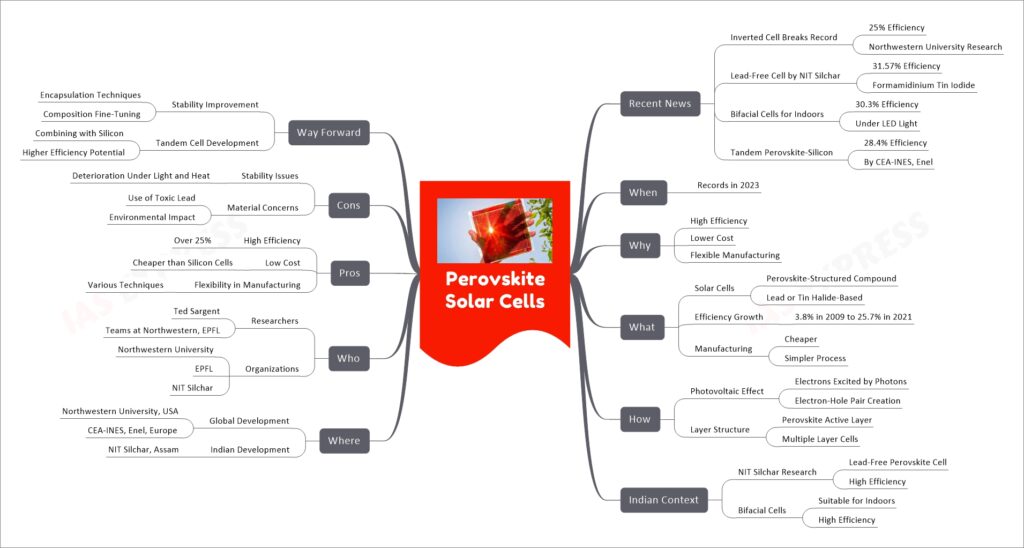Perovskite Solar Cells

Perovskite Solar Cells (PSCs) are an emerging technology in the field of photovoltaics, characterized by their use of a perovskite-structured compound, usually a hybrid organic-inorganic lead or tin halide-based material, as the light-harvesting active layer. Recent advancements have seen these cells achieve record-breaking efficiencies, surpassing 25%, making them a highly promising alternative to traditional silicon-based solar cells. Researchers worldwide, including those in India, are actively developing more efficient and stable PSCs. The primary advantages of PSCs include their high efficiency, lower production costs, and simpler manufacturing processes compared to silicon solar cells. However, challenges remain in terms of their long-term stability and the use of toxic materials like lead. The future of PSCs looks promising with ongoing research aimed at overcoming these challenges, particularly through the development of tandem cells that combine perovskite and silicon layers for even higher efficiency.
If you like this post, please share your feedback in the comments section below so that we will upload more posts like this.

